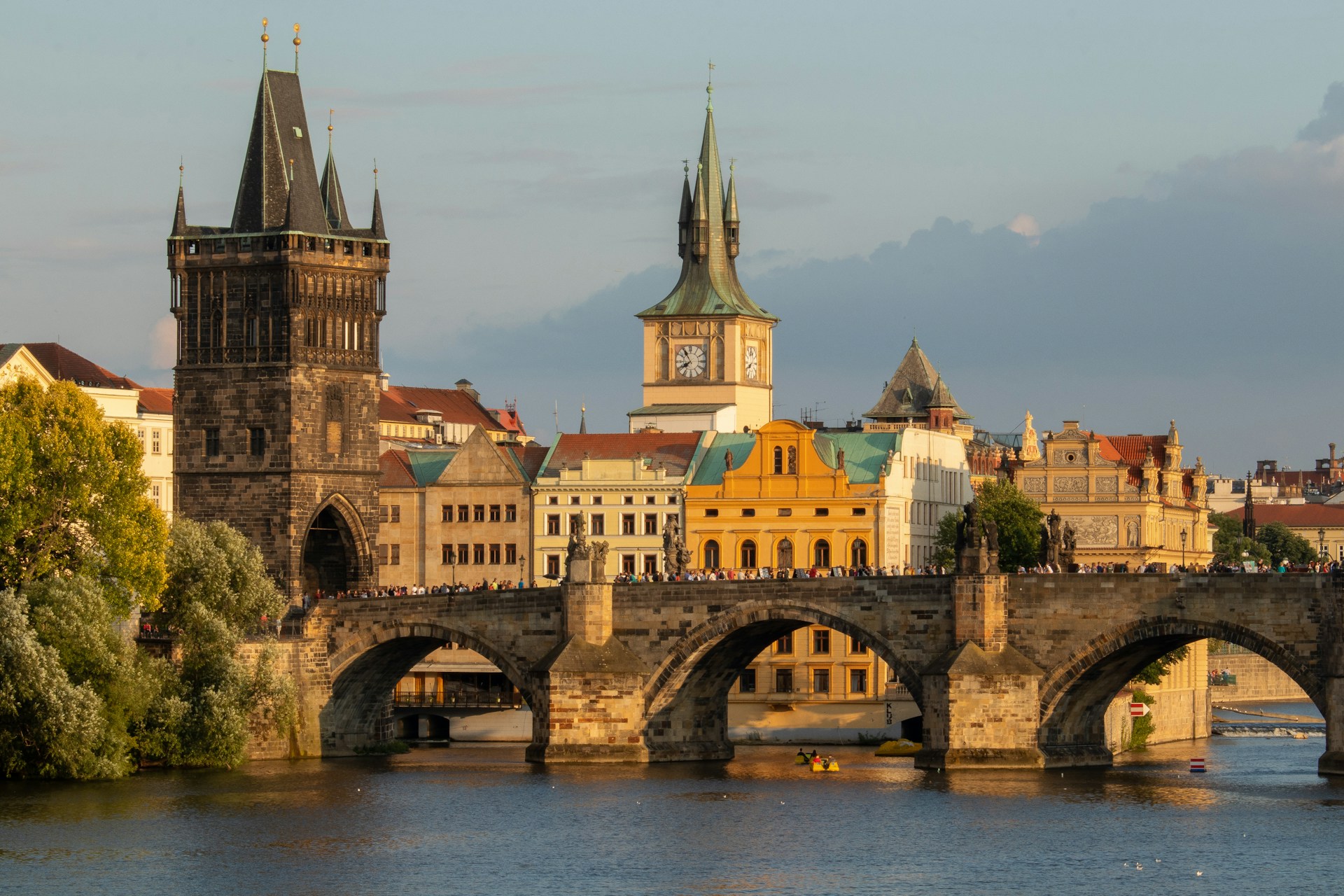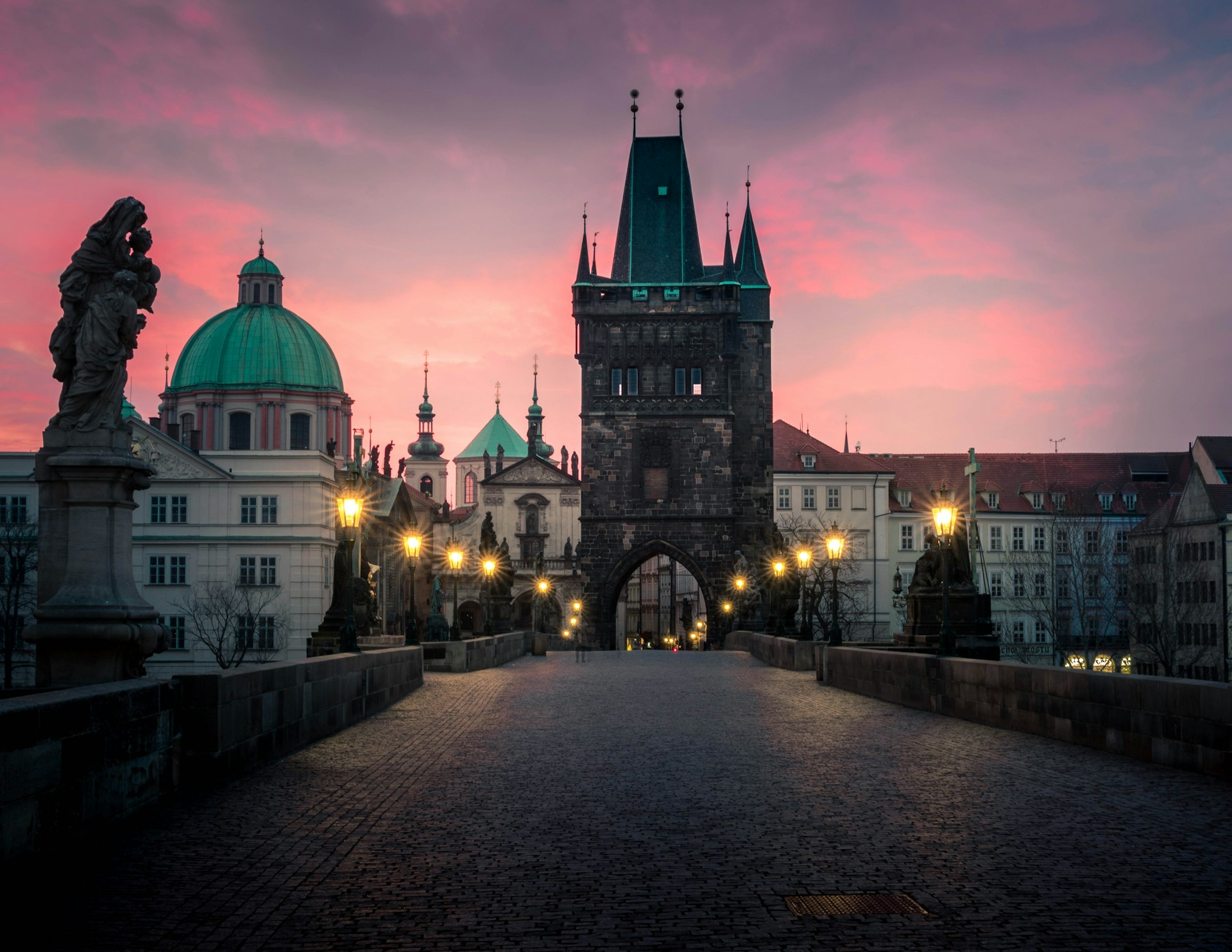Prague - Harmony of architecture
Prague is one of the most popular tourist destinations in Central Europe. It is a frontier of the modern West and the former Iron Curtain, hiding such beauty and elegance that you will be amazed. Prague has a bit of everything: historical monuments, admirable architecture, as well as vast gardens and parks. Find what you like in Prague!

Photo: Panorama of Prague’s Old Town
Harmony of Architecture - Prague: it’s not only the Bridge and the Castle
Beautiful architecture is one of the main Prague symbols. Charles Bridge, a dominant soaring above the Vltava River. Old Town Square with the best preserved astronomical clock in the world. The monumental Prague Castle, an old seat of Bohemian monarchs, more than a thousand years old. St. Vitus Cathedral with its elaborate stained-glass windows and strong spiritual atmosphere. Or the Dancing House on the bank of the Vltava River, one of the first expressions of modern architecture in the post-socialistic Czech Republic. If you already know these popular places, it is time to get deeper into the Prague corners. Plan a stroll through the Vinohrady Quarter, which combines historicist villas, functionalism and cubism. Have a rest in the gardens of Prague Castle, or plan a picnic under the bronze rider in Vítkov. There is a lot to see in Prague!

Photo: Charles bridge, Prague, Czechia
Church of the Most Sacred Heart of Our Lord - A prayer with a hint of British elegance in Vinohrady
The Church of the Most Sacred Heart of Our Lord is one of the most beautiful European modern churches. With its main steeples towering at the height of 42 metres, it is one of the dominant features of the Vinohrady Quarter, one of the best places to live in Prague today. In the middle of the church steeple, there is a huge clock with the dial diameter of almost 7.5 metres, which makes it the largest clock in the Czech Republic. The façade of the church is also interesting: it is constructed of fair-faced brickwork, unusual in the Czech Republic, but a popular architectural element in Great Britain. The church was designed by Slovenian architect Josip Plečnik, who worked as the castle architect for President Tomáš Garrigue Masaryk and, among others, significantly contributed to the contemporary look of Prague Castle. Vinohrady, where the church is located, has become very popular thanks to the growing gastronomy and parks that offer unusual views of the city centre.
Prague Castle Gardens - A peaceful oasis near the busy centre
The North Gardens are most valuable as far as history is concerned: the largest one is the Royal Garden, built by Ferdinand I, Holy Roman Emperor, in 1534. The south part belongs to five elegant terrace gardens. This vast garden compound filled with fountains, mysterious staircases, passages and pavilions has a special atmosphere throughout the seasons, amplified with some of the best views of Prague. The Prague Castle gardens are an important cultural heritage site, registered on the UNESCO World Heritage List, thanks to the fact that they reflect the transformations in the opinions on the function and meaning of gardens in the Gothic, Renaissance and Baroque era, as well as in the 19th and 20th centuries.

Photo: The UNESCO world heritage town of Cesky Krumlov in the Czech Republic.
Vítkov Hill - A bronze rider guarding Prague
Vítkov is a flat hill in Prague, often called Žižkov by the bronze Jan Žižka of Trocnov Monument with a mace, one of the ten largest equestrian sculptures in the world. Vítkov takes its name after Prague citizen Vítkov of Hora, who had a vineyard there. It is one of the most frequently visited hills in Prague with beautiful views of the city and the monumental memorial, which was built in 1928-1939 to honour Czechoslovak legionaries. Originally, it was intended as a tomb for President T. G. Masaryk – however, he did not want to be buried there, and thus his grave can be found in the Lány cemetery.
Lucerna and Světozor Passages
In the upper part of the busy Wenceslaus Square, there is Palác Lucerna, an art nouveau complex of buildings, built under the supervision of Stanislav Bechyně and Vácslav Havel (grandfather of President Václav Havel) between 1907 and 1921. The palace was originally designed as an ice-hockey stadium, but it later became a community centre, which it is till this day. It is one of the first reinforced-concrete buildings in Prague, complemented with an original glass passage. Inside you will find the provocative sculpture of the Horse by sculptor David Černý, depicting St. Wenceslaus sitting on the stomach of his dead horse. Near Lucerna, there is another passage from the period of late art nouveau and early modernism: Světozor, which is the most famous Prague cinema that started showing films at the end of 1918.

Photo: Sunrise on the Charles Bridge
Tips for Trips around Prague
An hour by car from Prague is Karlštejn, one of the most frequented castles in the Czech Republic. Nearby, you can visit the monumental limestone quarries called Amerika. There is also a beautiful chateau in Průhonice, where you can reach by car in 20 minutes.

